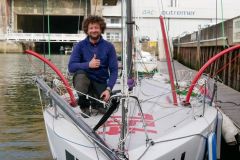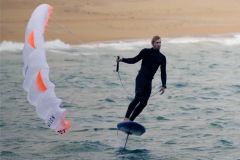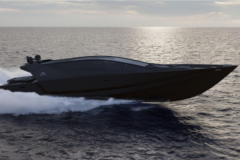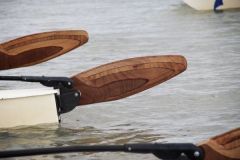Aerosail is a project that consists of creating an innovative, clean, silent and efficient maritime vehicle. This innovation makes it possible to pilot a steerable balloon in the manner of a sailboat, using the wind as the only means of propulsion, while remaining about ten meters above the water. The Aerosail is a steerable balloon connected to a stabilized daggerboard on 3 axes (Seaglider) allowing the balloon to sail like a sailboat. The Seaglider is the equivalent of the "daggerboard" of a sailboat, the cable connecting the Seaglider to the balloon serves as a mast and the balloon as a sail.
Stéphane, can you tell us about your project, the Aerosail?
This project is based on the principle of the sailboat simply, we did not invent anything. We have chosen to turn to hydrofoils, that is to say, downwind daggerboards, which will allow us to have either a better hold when sailing upwind or to get the hulls out of the water as much as possible. The idea is to reduce the drag on the water, especially weights and friction to go faster. There are two models of boats based on this concept, Alain Thébault's Hydroptère and the Hydrosail, which broke the world speed record by going 70 knots. Our concept is more like that of the Sail Rocket, except that we are in a dirigible balloon, which opposes the force that is in the water and the force that is in the air. It's a very complicated balance to find, but once we have found it we go very very fast, because we maximize all the efforts.
I've been working on the Aerosail project for 10 years. There was a test flight by Nicolas Hulot and Gérard Feldzer in 1993 with a dirigible balloon coupled to a hydrofoil on a straight line. Except that at sea it is important to navigate and choose your route in relation to the wind. So I looked into the project in 2003 and I made my 1 er test flight in 2007. Between 2007 and 2014 we had to find a solution that would allow us to navigate other than on a straight line.
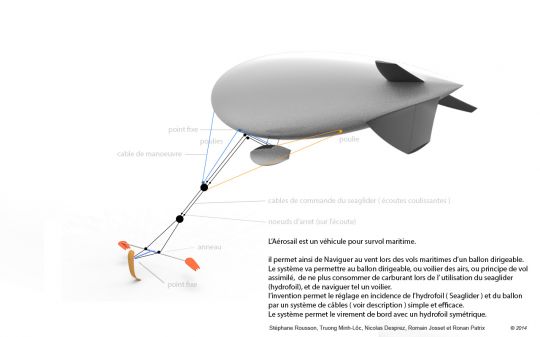
Currently, I am in the test phase where I made a first test flight to check the material and the function of the material. We were able with aerodynamic and hydronamic engineers to schematize the efforts in play and to verify that on paper it works. Unfortunately, during my test, we didn't have enough wind to validate everything, so I'm starting a new test campaign in March/April, which will be much longer and on which we'll validate the navigation part. If everything goes well, we'll make the crossing right away, otherwise we'll wait until September or October. This demonstration will allow us to prove that we are capable of crossing, over a period of about ten hours with a wind of about 5 to 10 knots and to show that we can go faster than the wind.
What technology is the Aerosail based on?
What is in the water corresponds to the drift of the boat, the cable is the mast and the balloon is the sail. Technically, it is a bit like the principle of the sailboat where we put out of water everything that was heavy. We put everything in the air, because the friction is less, but today I'm a bit past that stage and the piloting is more similar to kitesurfing than sailing.
What is the purpose of this project? To realize your crossing?
When we work on pure innovation, people wonder why we do it. Explaining the technique is too complicated, so we have to do something so that people can imagine. By making a crossing between Nice and Calvi, we will show that the Aerosail principle works and that tomorrow we will be able to design much larger machines to carry passengers. People will understand the interest of the project which will allow us to find solutions to navigate, to go faster while consuming nothing in terms of fuel, to have comfortable flights and which will allow to transport passengers.
Are you looking to create a new means of transportation?
Not necessarily, there are already Zeppelin or Goodyear airships that carry about twenty people. The idea is to say that with sea crossings carried out in balloons, we can cut the engines and use only the wind to be able to navigate. To schematize, the goal is to improve existing means of transport.
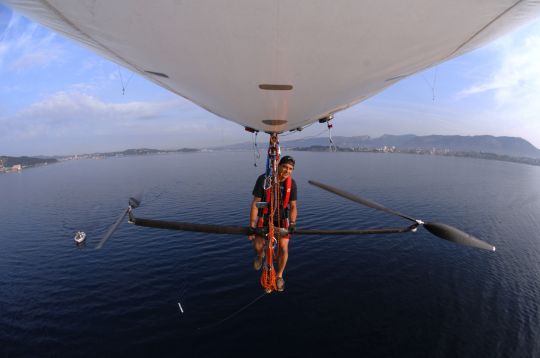
Does your project also have an ecological dimension?
Yes, in all the projects that I do, the idea is to say that we are all capable today of bringing ecological solutions that work. It is important to have an ecological logic when it is feasible.
Do you have partners who support you on this project?
A lot of small and medium-sized companies have been supporting me for years, whether in the nautical world, in the field of technical fabricâeuros¦ A lot of partners are helping me to develop the project, but no big partners. Red Bull has taken a look at the project, but for the moment they are not yet partners. We are looking for partners who like innovation and who can join us. Everything will be on the site, they can follow the tests.
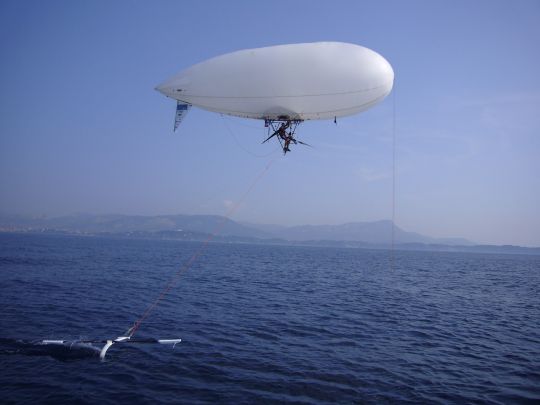
How do you fund your research?
With bits of string, it's a bit of a struggle. It's small jobs on the side and I finance it as I can. It's a lot of work. I have a lot of companies that give me equipment so that's already a lot. The rest is human. I have volunteers who help me when it is necessary, and then the rest is workâeuros¦ A hundred people believe in this project and allow to gather money, but also knowledge (engineersâeuros¦). I am not alone, we must be more than 200 people. A partnership would allow us to pay and finance a nice team to go further in our research and make bigger balloons.




